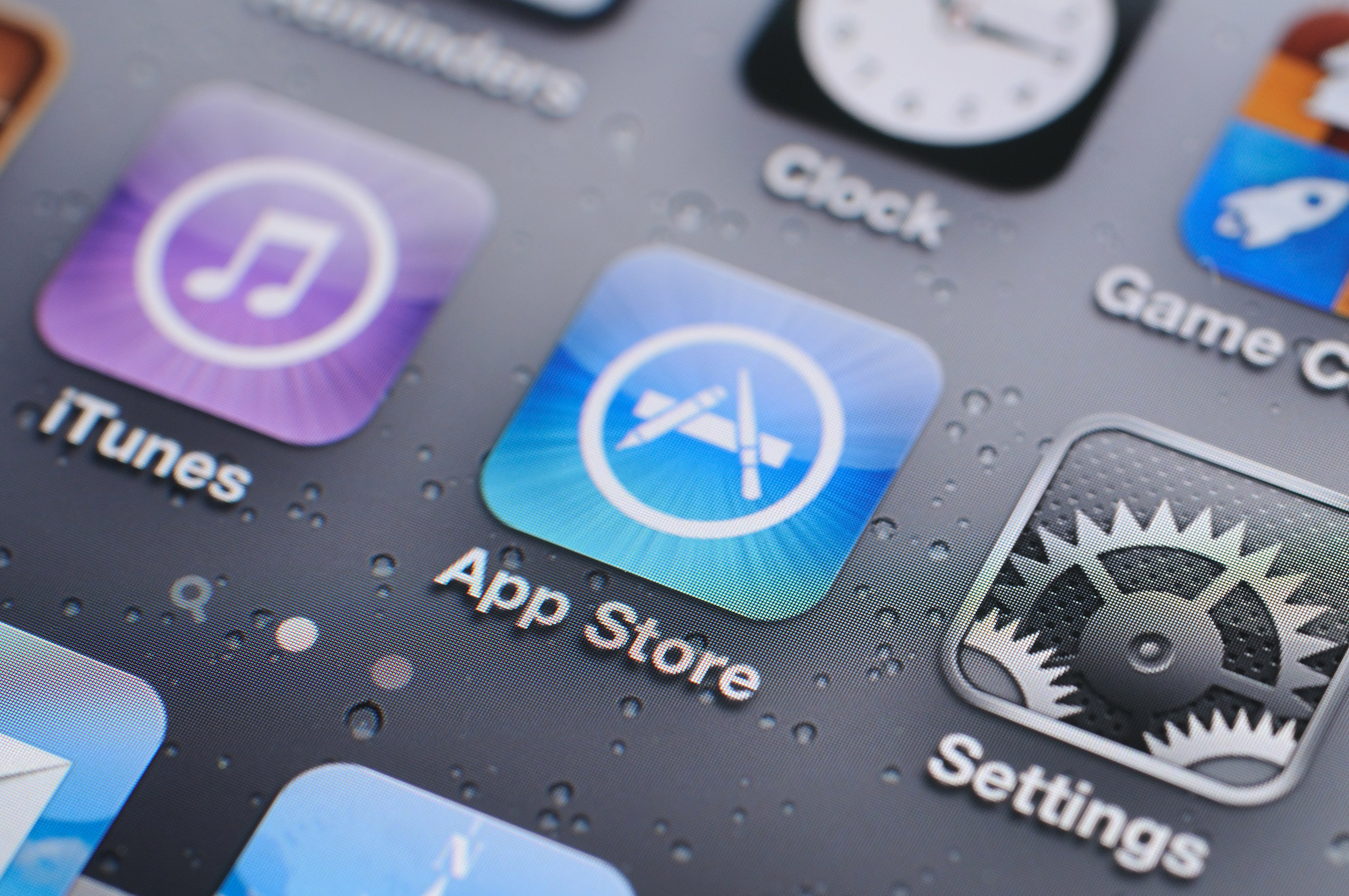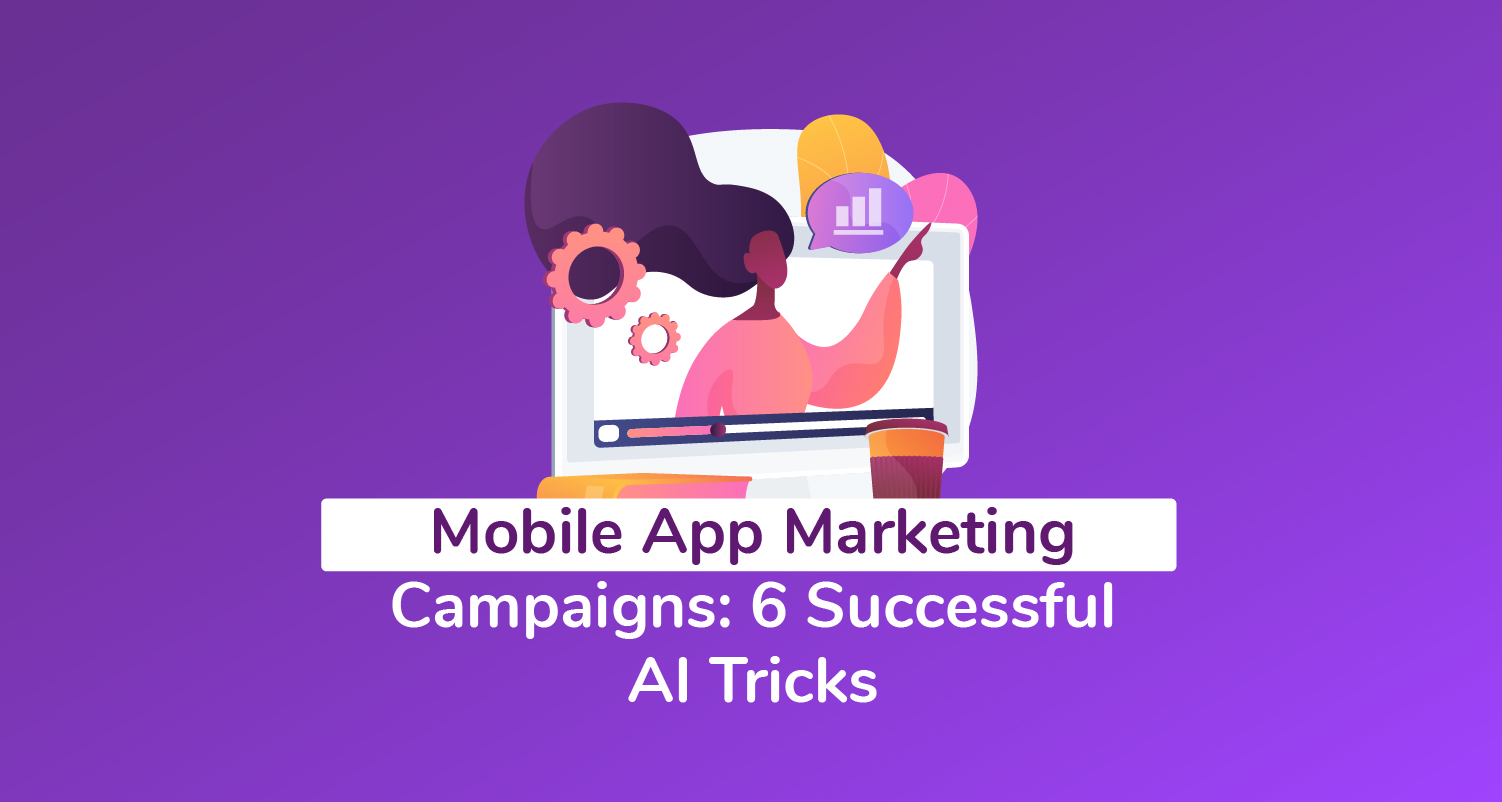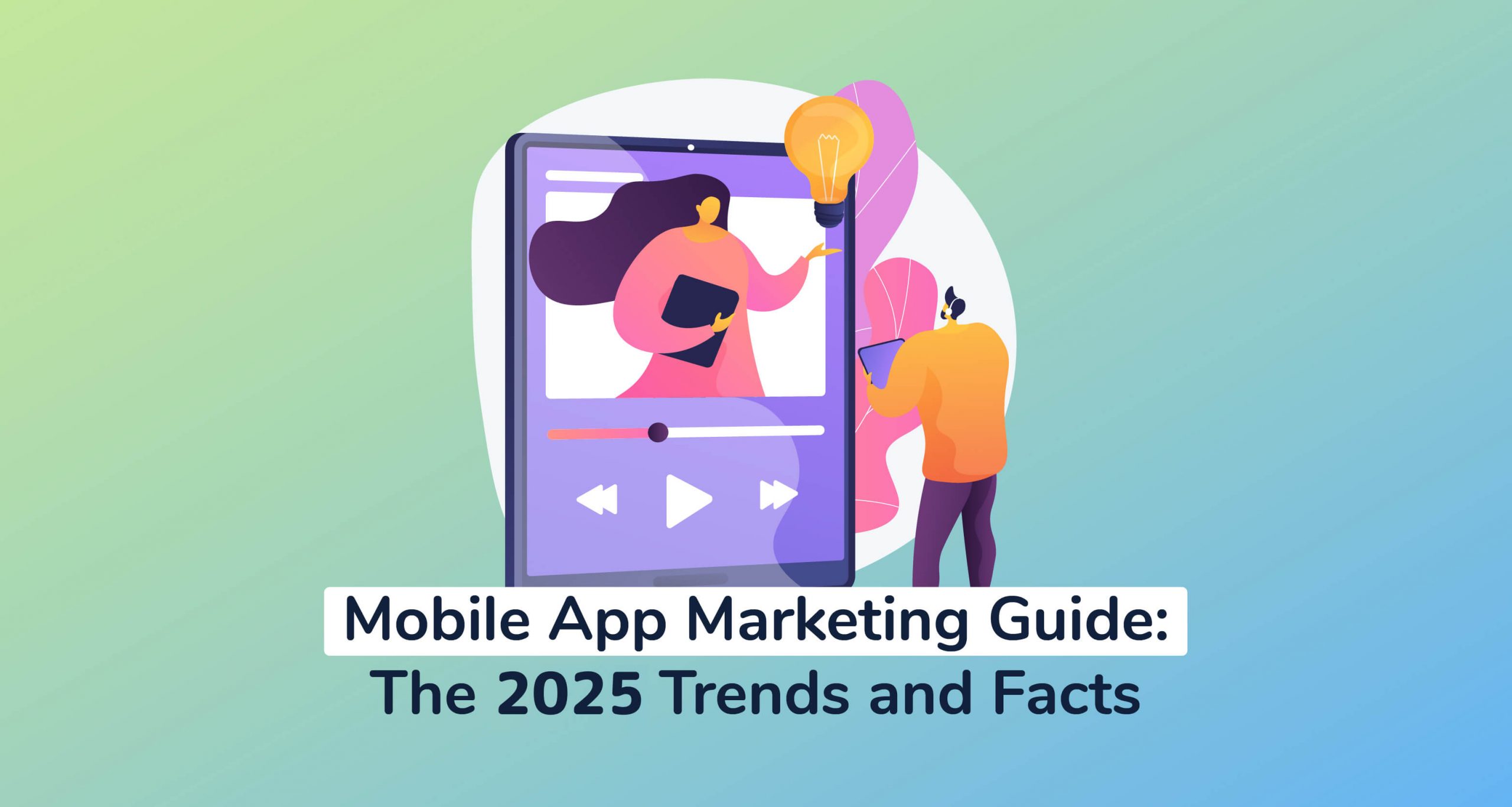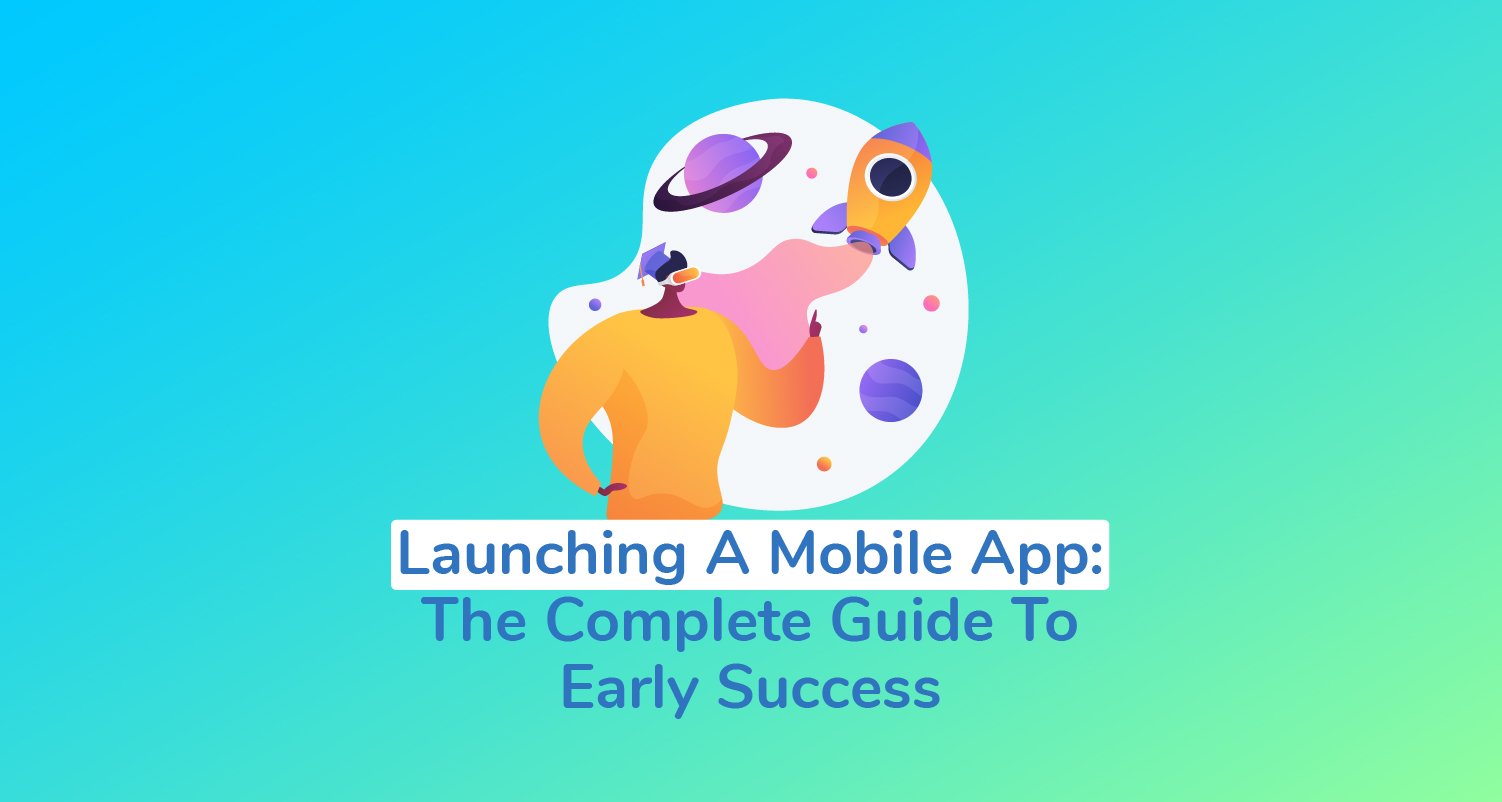
Mobile App Marketing – The Ultimate Guide for Beginners

Twitter, Facebook, Instagram, WhatsApp, Tik Tok, Zoom – you name it. While all these popular mobile apps are undeniably remarkable, their rise to the top has a lot to do with strategic mobile app marketing.
Consider Tik Tok’s case, for instance. Just when we thought the likes of Facebook, Twitter, and Google had completely dominated the social media space, an underdog suddenly arose from ashes – thanks to the power of mobile app marketing. It now boasts more than 2.6 billion downloads to its name and counting.
But, it’s not alone. Here at PreApps app marketing agency, we’ve had the pleasure of helping our clients generate more than 550 million app downloads through various mobile app marketing strategies – mobile marketing, social media marketing, App Store Optimization, push notifications, landing pages, etc.
Now, those are some of the proven tricks that I’ll be explaining through this guide. What’s more, you get to learn how to draw up a mobile app marketing plan, plus all the critical factors you should take into account before and after marketing your mobile app.
The Growth of Mobile App Usage and the Current Global Mobile App Market
Back in 2014, at least according to a study conducted by Nielsen, mobile users were spending an average of 30 hours each month interacting with their smartphones.
That number has probably grown quite substantially since then, considering the ever exponential growth of mobile tech, and the fact that users are spending 65% more time on their phones every two years.
Now let’s break that down into small, intricate details.
On average, a smartphone user will interact with 30 apps per month, and 9 per day. When you factor in Nelson’s figures, each installed app, cumulatively, is opened for more than 1 hour per month.

Currently, there are over 3 billion smartphone users in the world. That translates to a pretty expansive market- with each app having the potential of growing up to 2.5 billion hours of use per month. And the best thing about this is that it’s not static. The phone population is still growing, and so is app usage.

Well, of course, every app developer and app entrepreneur wants a chunk out of this huge market. With 2.2 million apps in Apple’s App Store and 2.8 million in Google’s Playstore, it’s no surprise that mobile app marketing plans are increasingly getting aggressive.
Building a great app and waiting for users to discover it, and probably share the news with their friends just doesn’t cut it anymore. You need a comprehensive mobile app marketing strategy, backed by methods that have been tried and tested.
That’s why we’ve compiled the following mobile app marketing guide- to help you push your brand, and competitively position yourself even against some of the most established apps out there:
Important Factors To Consider Before Marketing Your App
1. Purpose of Your Mobile App
This is arguably the most critical consideration before you develop a mobile app marketing strategy.
To build a strong mobile marketing framework, you must first define the purpose of your app. That forms the foundation of your entire marketing campaign
So, what does your app actually do? Does it satisfy an existing need? Does it provide value for its users?
Value and purpose are two principle things your potential user will consider as they decide on how to respond to your app marketing strategies.
Even the most aggressive app marketing strategy would be useless if it was focused around an app that users find useless.
And no – your app developers don’t have to build an extremely complicated app to comprehensively address needs and provide value. Complicated problems, more often than not, are solved by typically simple solutions.
2. Distribution Channels
Where will users get your app? Is it through Apple’s App Store, Google Play Store, social media, or your website?
Which specific platforms will it be compatible with? And which app publishers are you planning to work with? Are you seeking to connect with users through push notifications or within the app itself?
Once you use various mobile app marketing strategies to generate leads, the app itself should be easily accessible for direct app download and subsequent app installation. App users should be able to access it across all the relevant app markets and devices.
This may seem like a very obvious step, but – as it turns out – quite a number of app developers continue to overlook it. And that’s how they ultimately end up locking themselves out of rather promising markets.
Now, to effectively determine the ideal app distribution channels, you should systematically analyze your customers’ needs, establish channel objectives, identify major channel alternatives, and evaluate major channel alternatives, in that order.

3. Revenue Model
By now, you’re probably aware that Facebook was founded in the year 2004. What most people don’t realize, however, is that the entire planning process began way before the company established its revenue models.
Mark Zuckerberg understood his site’s purpose and projected growth. That’s how he was able to resist persistent pressure to sell it to bigger brands, even at a time when he had no solid monetization model.
In the year 2006 for instance, he declined offers of $750 million and $1 billion, despite the fact that Facebook, at the time, had an annual net gain of only $5.6 million.
It was not until March 2008, when the company hired Sheryl Sandberg as its Chief Operating Officer, that the executive finally developed a solid and systematic monetization strategy. It took 4 years of critically assessing user engagement and the corresponding growth curve, to come up with the ad monetization plan that has made Facebook a profitable company.
That’s just one example that proves how systematic planning of the revenue model will not only help streamline your mobile app marketing campaign but also substantially boost your overall profitability.
Here are some of the most popularly used mobile app revenue models, according to Apptamin:

6 Effective Mobile App Marketing Strategies:
#1. Make Your App Discoverable Everywhere
Now that we’ve emphasized the importance of establishing distribution channels, make no mistake about it. Mobile app distribution is not the same as mobile app discoverability.
Although they are correlated, they are two separate concepts. While distribution deals with the specific platforms that host your app, discoverability is all about app promotion and the platforms that create awareness about your mobile app.
Now, that’s precisely where App Store Optimization comes in. It’s one of the mobile app marketing strategies that are popularly used to facilitate discoverability within the App Store.
And speaking of which, it’s worth noting that only a fraction of app users discover new apps through the App Store- 63% to be precise. That’s according to the European Technographics Consumer Technology Online Survey. Other users, more often than not, learn about them via a variety of ways – while surfing through the web, on their social media feeds, on blogs, from other applications, etc.

As such, you might not want to restrict yourself to just a handful of mobile app marketing campaigns. The best promoters always try to hunt wide by leveraging both organic App Store optimization and inorganic app marketing strategies.
#2. Choose The Most Popular Keywords
Here’s a quick exercise for you…
On your mobile device, go to Apple’s App Store or Google’s Playstore and then run a search on “soccer”
Take note of the results, and then run another search on “football”. Notice the slight change in the search results?
In this case, the apps that are optimized for “soccer” are seemingly targeting phone users in the US, while those that rank well for “football” are better performers in Europe.
Similarly, you might want to market your mobile app using keywords that are common among your target users. Best app keywords happen to define the target audience that will ultimately find your app.
#3. Focus Your App Marketing On The App’s Value
Facebook and LinkedIn are both social media networks. But there’s a reason why Facebook consistently markets itself with the slogan “Facebook helps you connect and share with the people in your life”, while LinkedIn goes with “Be great at what you do”.


Same app category, but two different values. Facebook sends you push notifications about your friends, while LinkedIn’s push notifications are all about job opportunities and professional connections. That’s why you already have both apps installed on your mobile device.
If their value was not clear, the bulk of the users would not proceed to download both- because who would need a second social media app when you’re already active in one?
And that’s one of the prime reasons why Google+ was struggling. It didn’t provide and communicate the value that was supposed to set it apart from Facebook and the likes
So, in addition to establishing a purpose that addresses a recurrent problem, you should center your mobile app marketing on the app’s value. Keep reiterating it with simple, concise statements.
#4. Create Perfect Screenshots and Preview Videos
Although you’re bound to spend a lot of resources driving your target audience to your App Store landing page, that’s only a fraction of the whole process. Your visitors will still need to be converted into downloading the app. And that’s precisely where screenshots and app preview videos come in.
Screenshots and preview videos are like movie trailers for your mobile app. They’ll demonstrate the principle features, and give visitors a feel of your app’s interface.
So make sure you capture informative and exciting media that not only highlights unique features but also demonstrates your app’s value.
#5. Pick The Right App Category
Have you ever felt the frustration of having to walk a couple more yards around a supermarket just because an item was not placed on its ideal shelf? Such a simple mistake could potentially cost a shopping store thousands in lost sales.
In the mobile app marketing world, however, placing an app in its required category is not that simple. App categorization is a science in itself.
Consider, for instance, the fact that App Store charts typically rank their best-performing apps by their categories. As such, you might want to carefully pick a category that gives your app the best shot of being featured on the home page ranks.
If you’re working with a social app, for example, it pays to classify it as a “Lifestyle” app instead of proceeding straight into the “Social” category. That way, you’d avoid having to directly compete with established social apps like Facebook, Twitter, LinkedIn, and the likes. It’s much easier to fight for the “Lifestyle” category top spot alongside less popular apps like Horoscope.
#6. Review Your Competitors
One of the most popular adages in poker is; if you can’t identify the fish within the first ten minutes of the game, then it’s you.
Similarly, mobile app marketing is not just about creating product awareness. It’s also a game, a race for the top prize in being the most outstanding.
And that requires you to critically assess your competition, review their strategies, identify their positions in the market, plus establish their strong and weak points.
In other words, what keywords are they optimizing in their mobile marketing? How long have they been in the market? How are their social media accounts performing? Who is their target audience? Which platforms have they used to market their apps? How are they engaging their users – via push notifications or within the app itself?
The subsequent findings should help you plan an effective counter-campaign to dominate your app category.
Organic Promotion Strategies For Mobile App Marketing
In addition to App Store Optimization, a comprehensive app marketing strategy ought to have an equally effective organic promotion strategy.
Here are a couple of solid ideas you could use:
#1. Guest Blogging
As it turns out, marketers who prioritize blogging ultimately attract an average of 13 times more positive ROI than competitors who don’t.
And in addition to regular blogging, consider taking advantage of guest blogging – as it has proven to be extensively effective in reaching out to audiences on third-party platforms.
That’s why you should, in particular, work with popular blogs that command a huge following. At least they’ll reach out to their subscribers through email, push notifications, plus social media posts on Facebook and Twitter.,
Have a look at the following data – showing the traffic generated from guest blogging:

Of course, building such a following takes a lot of effort and time – but it’s well worth it since the mobile app market is extremely competitive. Providing value in your posts as you creatively promote your app will progressively increase your app’s visibility, and continue to funnel new visitors to your app’s landing page.
#2. Leverage Your Website
Mobile is good. Apps are exciting. But, the truth of the matter is, the web is equally important.
When a review of your app is featured on a leading site, it’s likely to be linked to two places; the app’s page or your website. Whenever a prospect researches on Google about your app, the results should not only display the app store but also your website and corresponding details.
The app store is very limited when it comes to content. The best place to extensively optimize your content and subsequently build a brand is the website.
Besides, you also get to connect with your audience through blogging and web push notifications.
#3. Encourage Users To Review and Rate Your App
What do you do when you’re unsure about an app? You view past ratings. That’s why both Apple and Google consistently rank apps by their reviews, among other factors.
There are many thoughtful ways to encourage users to rate your app. In addition to simply asking them through the app, you could send them push notifications from time to time – to offer freebies in exchange for great reviews and ratings.
#4. Facilitate Social Sharing of Your App’s Content
Going viral is the in-thing today when it comes to mobile marketing. Every app marketer wants a piece of the action.
In fact, that’s how Sarahah managed to spread like a virus, and consequently, became one of Apple’s most popular apps in just a couple of days.
The strategy is pretty simple- find a way to embed social media share buttons within the app’s content, and then create value that would compel users to excitedly share content with their friends. You could also use push notifications to rally social media shares.
If you need more pointers, you should perhaps take a leaf out of Musical.ly, another app that grew tremendously in a relatively short period of time.
#5. Have Your App Featured on Top App Review Sites
If you’re an avid follower of box office movies, then you know that a movie has almost zero chances of making a profit if it’s not featured in top review sites like IMDb and Rotten Tomatoes.
Ok, I know what you’re probably thinking at this point. Don’t mobile app markets have their own app review systems?
Yeah, that’s right. But, here’s the thing – App Store ratings are mostly intended for warm perspectives who’ve already learned about your app, and are trying to decide whether to proceed or not.
Therefore, by the time they land on the mobile app market, you should have used third-party review platforms to create awareness about your app. And while you’re at it, you might also want to use the opportunity to build excellent outbound links on the review sites. They’ll not only help you in SEO but also in directing traffic to your landing page and mobile app market page.
Conclusion
All things considered, mobile app marketing is pretty straightforward. Critical pointers you need to keep in mind are:
- There are over 3 billion smartphone users in the world
- Each app has the potential of growing up to 2.5 billion hours of use per month.
- With 2.2 million apps in Apple’s App Store and 2.8 million in Google’s Playstore, it’s no surprise that mobile app marketing plans are increasingly getting aggressive.
- To build a strong mobile marketing framework, you must first define the purpose of your app. That forms the foundation of your entire app marketing campaign.
- To effectively determine the distribution channels, you should systematically analyze customer needs, establish channel objectives, identify major channel alternatives, and evaluate major channel alternatives, in that order.
- The revenue model will not only help streamline your mobile app marketing campaign but also substantially boost your overall profitability.
- While distribution deals with specific platforms that host your app, discoverability is all about platforms that create awareness about your app.
- Keywords will define the target audience that will find your app and the overall rank against your competition.
- Center your marketing on the app’s value. Keep reiterating it with simple, concise statements.
- Capture informative and exciting media that not only highlights unique features but also demonstrates your app’s value.
- Since top app charts are ranked according to the category, you should choose one that gives your app the best shot of being featured on the home page.
- Review your competitor’s strategies, identify their positions in the market, plus establish their strong and weak points.
- Keywords will define the target audience that will find your app and the overall rank against your competition.
- In addition to regular blogging, consider taking advantage of guest blogging – as it has proven to be extensively effective in reaching out to audiences on third-party platforms.
- The best place to extensively optimize your content and subsequently build a brand is the website.
- Encourage users to review and rate your app.
- Facilitate the social sharing of your app’s content.
- Use push notifications to rally social media sharing on Facebook, Twitter, Instagram, etc.
- Have your app featured on top app review sites.
Feel free to share your marketing journey and strategies that have worked for you….
If you have any questions about your mobile app marketing strategy, feel free to reach out to us and we’ll be happy to clarify them for you.
Newsletter
Don’t miss a thing! Sign up to receive daily news
Subscribe Newsletter











